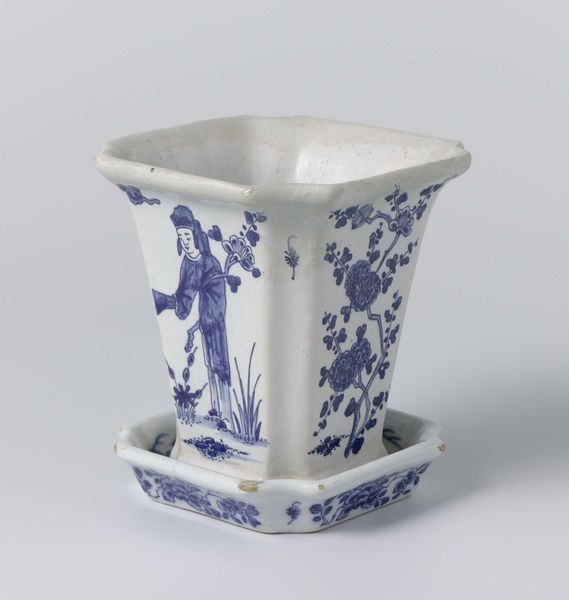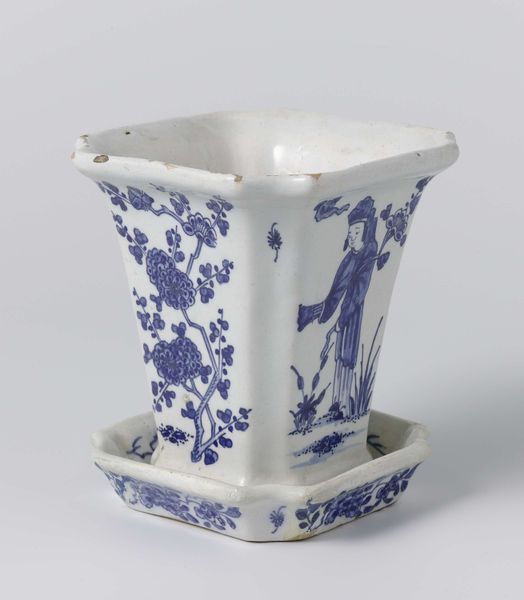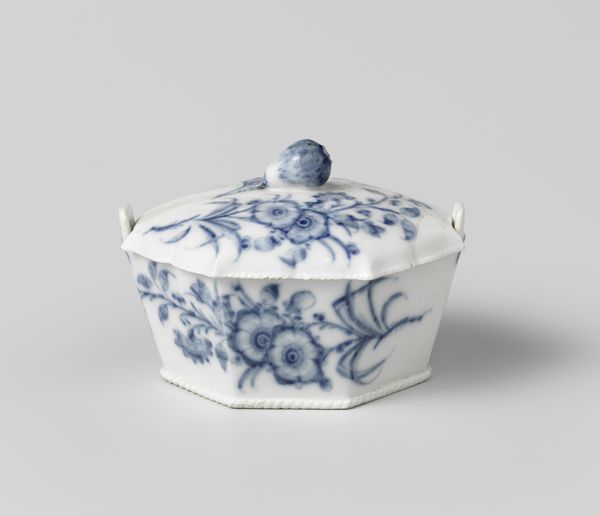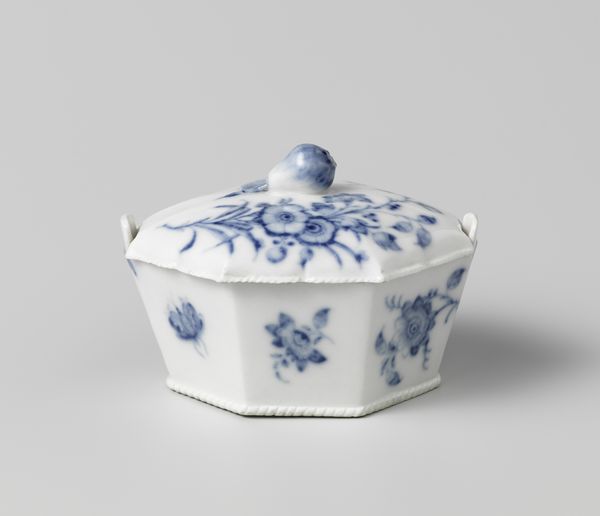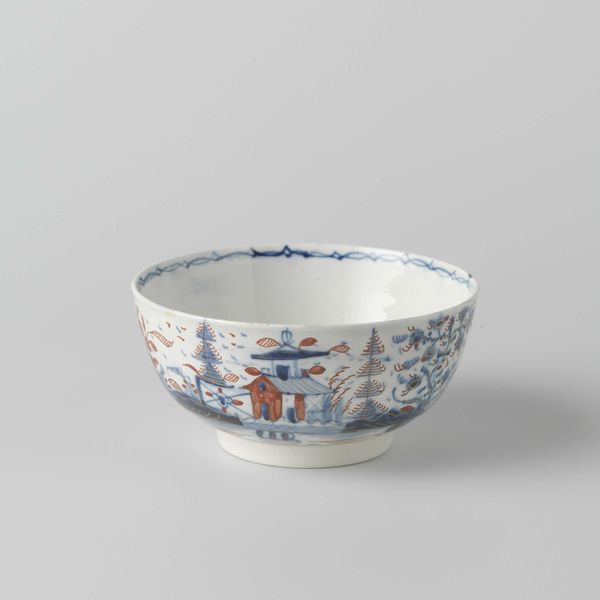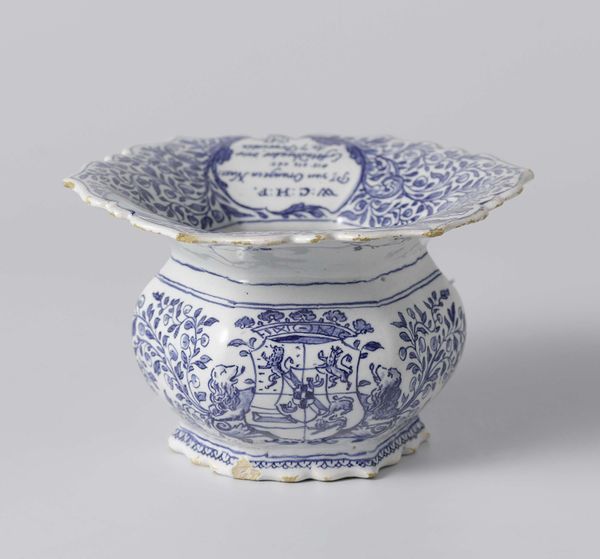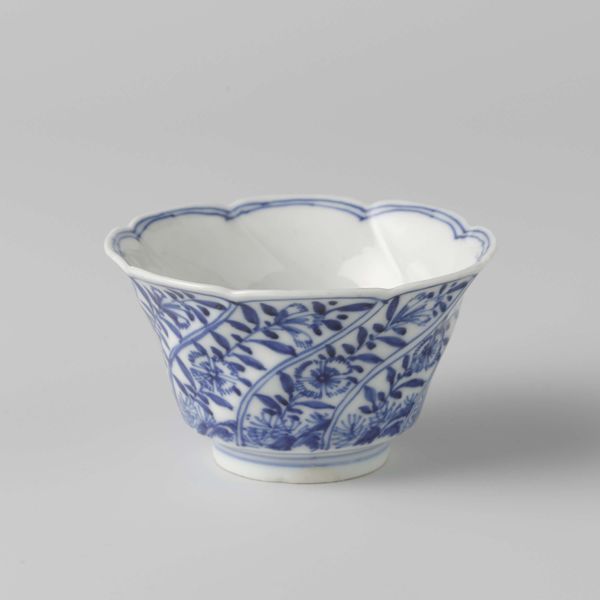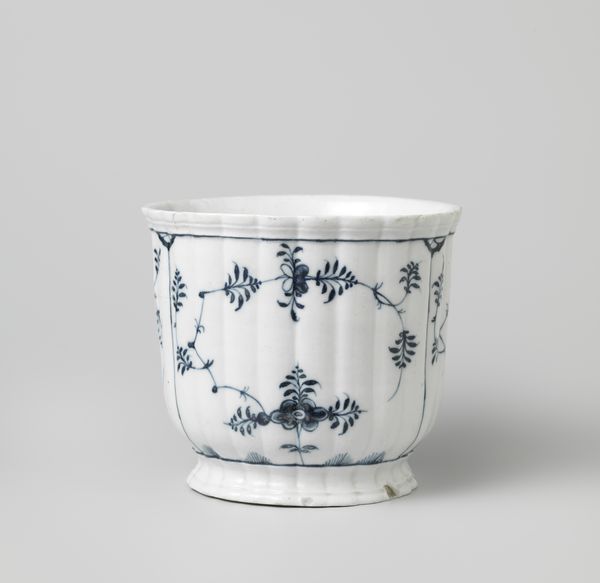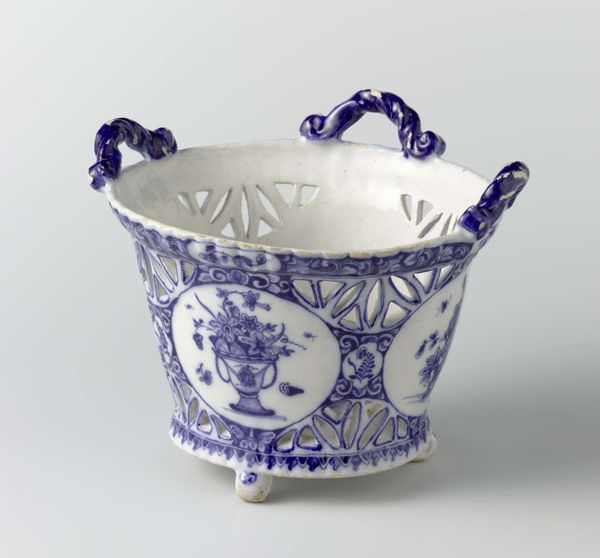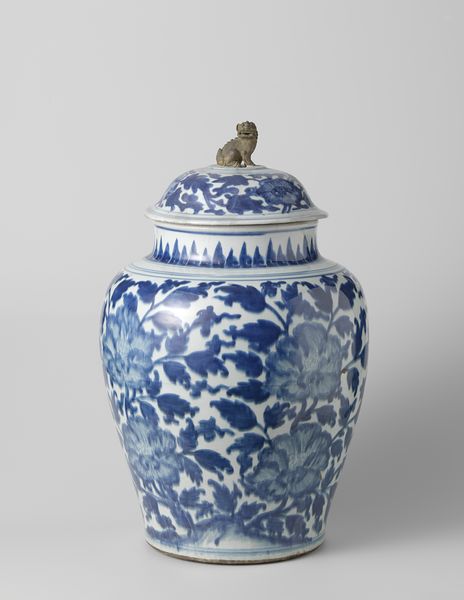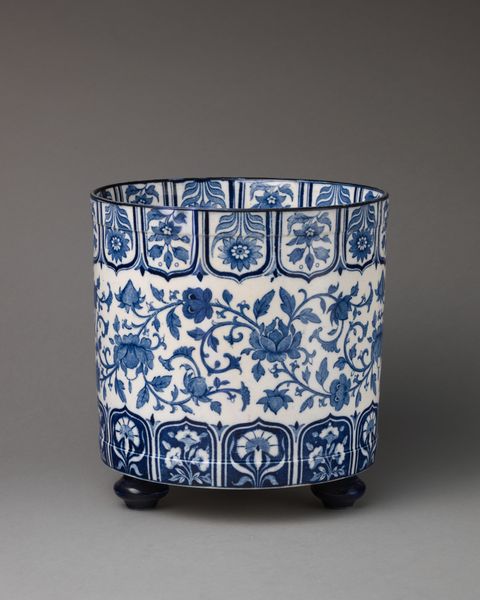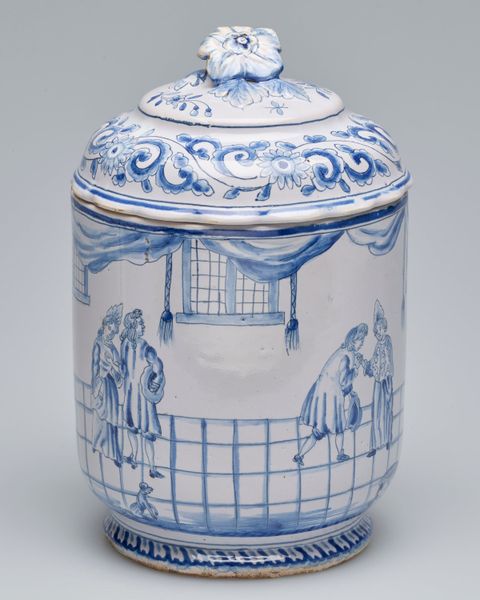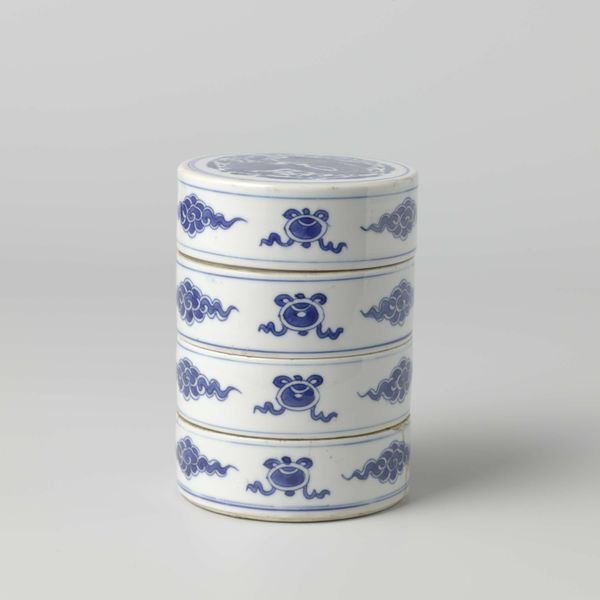
print, ceramic, earthenware
# print
#
asian-art
#
ceramic
#
earthenware
#
stoneware
#
ceramic
#
decorative-art
Dimensions: height 19 cm, length 33.2 cm, width 23.4 cm
Copyright: Rijks Museum: Open Domain
Curator: This intriguing object is an oval stove with pierced sides and what's known as a FitzHugh border, crafted from earthenware and ceramic sometime between 1800 and 1820. Editor: My first thought? It's a bizarre little porcelain fort! Functional, I guess, but so dainty with those blue floral designs. Makes you wonder who was warming their hands over this back in the day. Curator: Indeed. The “Asian Art” tag in the Rijksmuseum suggests the influence of trade routes and cross-cultural exchange on decorative arts during that era. This type of stove probably speaks to certain class dynamics. The wealthy attempting to re-create oriental-infused interior spaces for themselves. What appears dainty might in fact represent economic power, privilege, and status. Editor: Status heating, I like that. Thinking about it, the piercework adds a practical coolness amidst all the floral fancies. Almost industrial. I picture someone aristocratic, shivering in their silks, reliant on this fancy thingamajig! Curator: Right! So thinking about gendered dimensions—how might women from a similar social location as the potential owner of this heater benefit or otherwise gain relative advantage? Editor: Mmm, maybe something like, controlling a household temperature gave her subtle power? Managing even just her personal microclimate makes me think of negotiating within strict roles. It’s not revolution, but... a curated kind of warmth. Curator: Exactly. We can consider the stove's place within discussions of identity, class, and privilege. This era, marked by European colonial expansion, reveals how domestic objects served not only functional roles, but also embodied aspirations toward certain cultural refinements. Editor: Thinking now of contemporary art and theory. Is the object really all that different from a Damien Hirst diamond-encrusted skull, say, if it projects such privilege, beauty and detachment? Perhaps the core elements of decorative and 'fine' art have never changed... Curator: A striking parallel! It challenges the divisions we often impose. Seeing beyond surface charm toward social function remains vital to understanding the complex layers within even the simplest ceramic form. Editor: Precisely! I leave here wanting a ceramic fort and a deeper reflection of all those little histories.
Comments
No comments
Be the first to comment and join the conversation on the ultimate creative platform.
